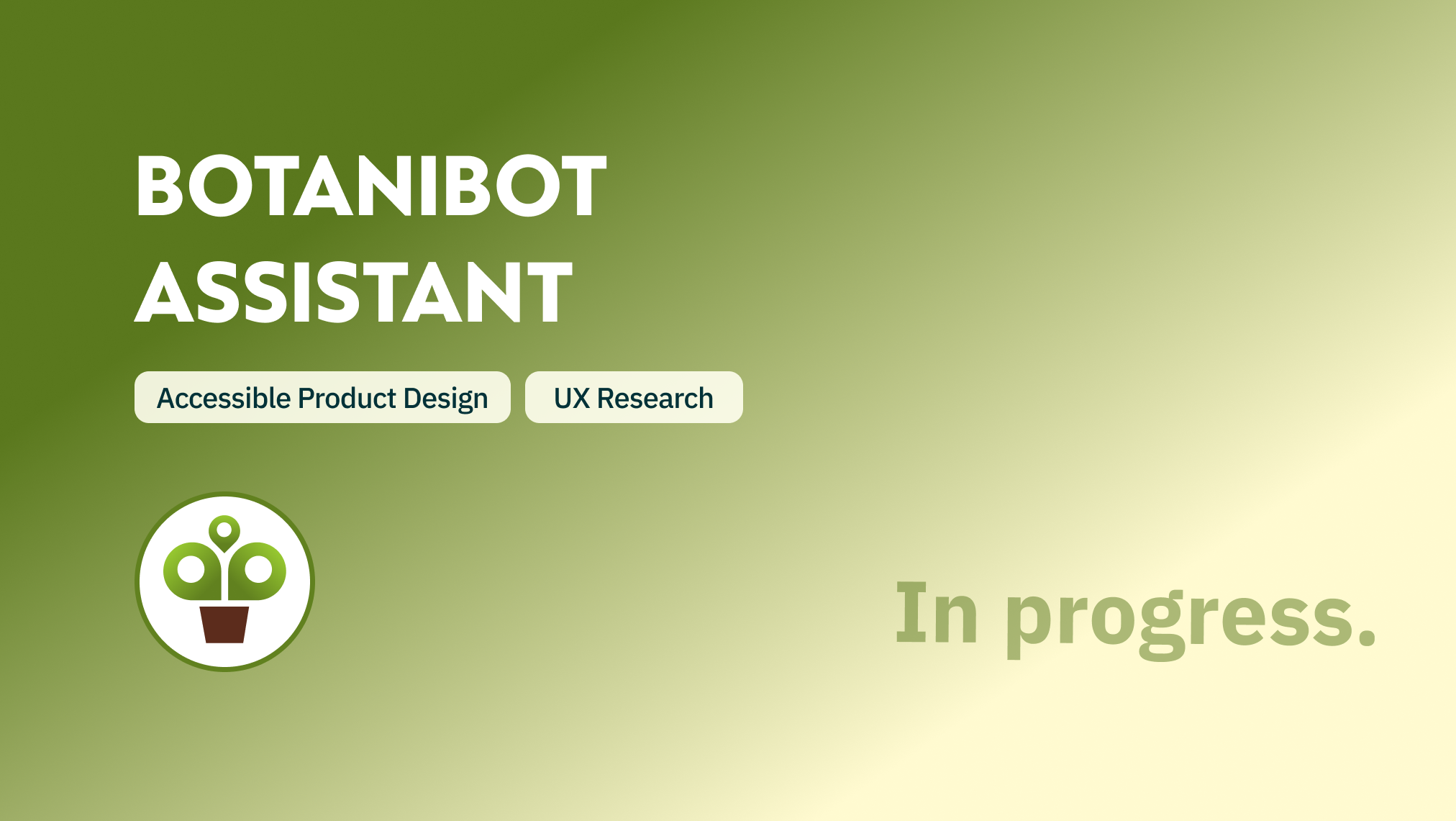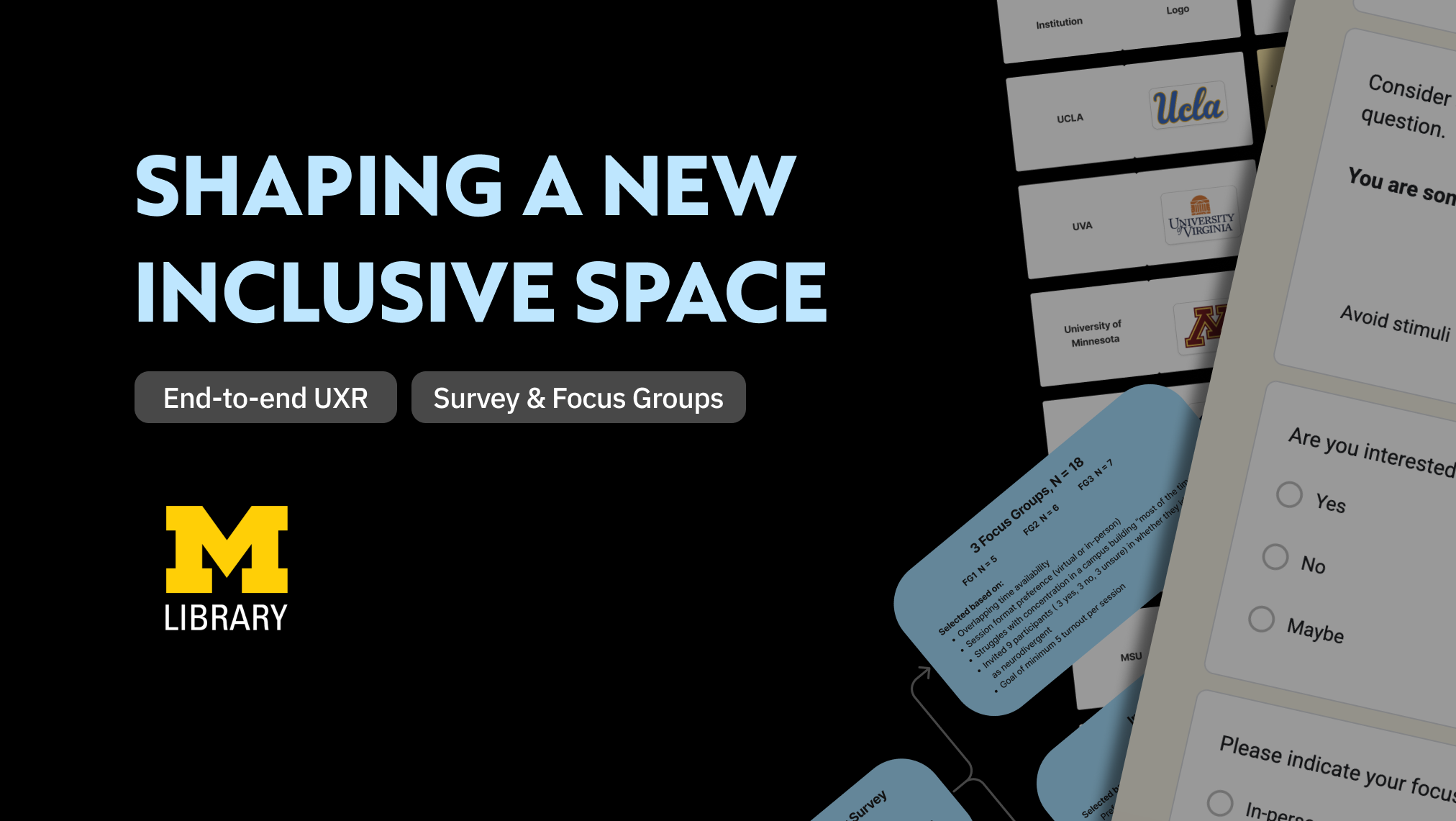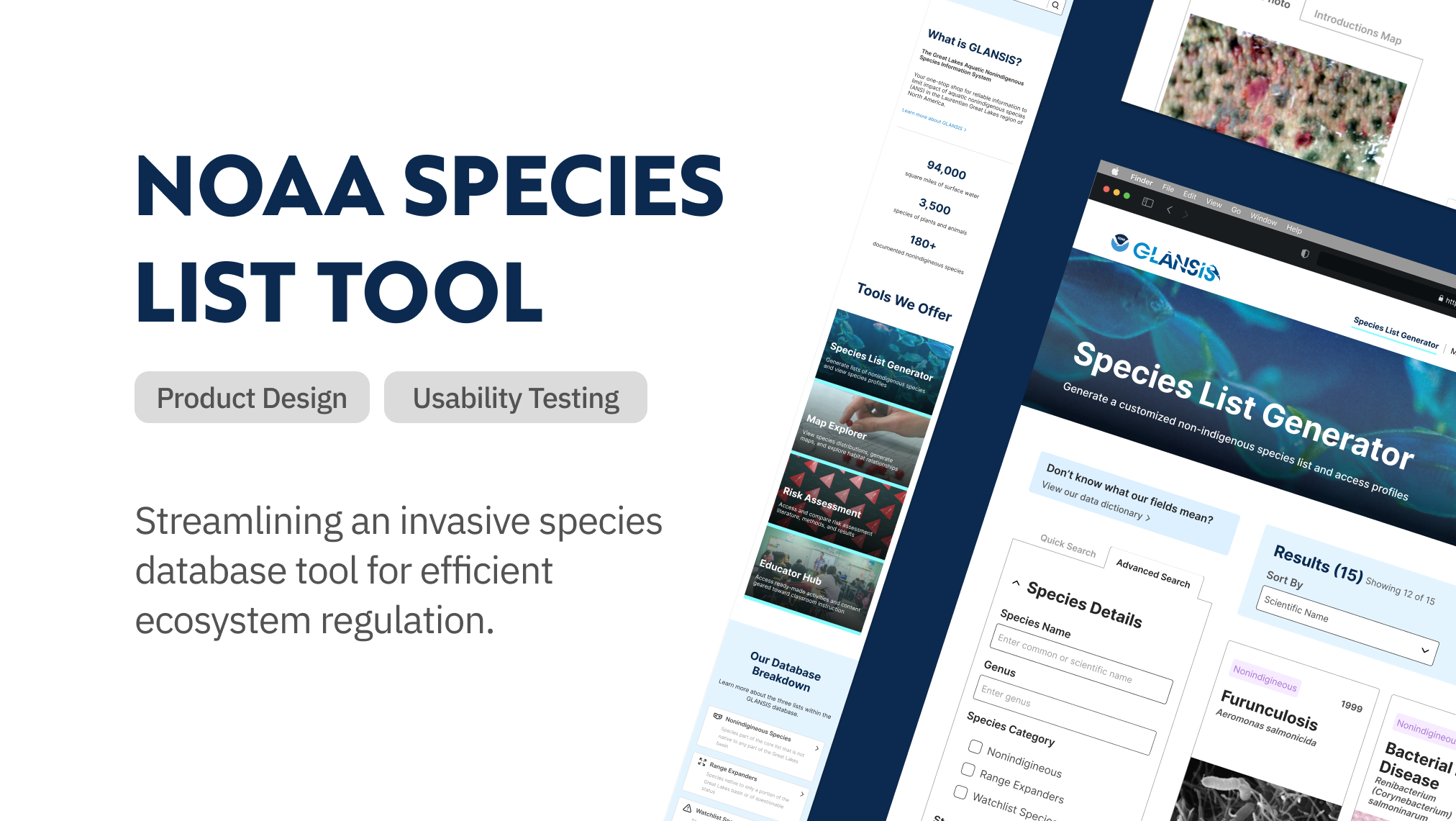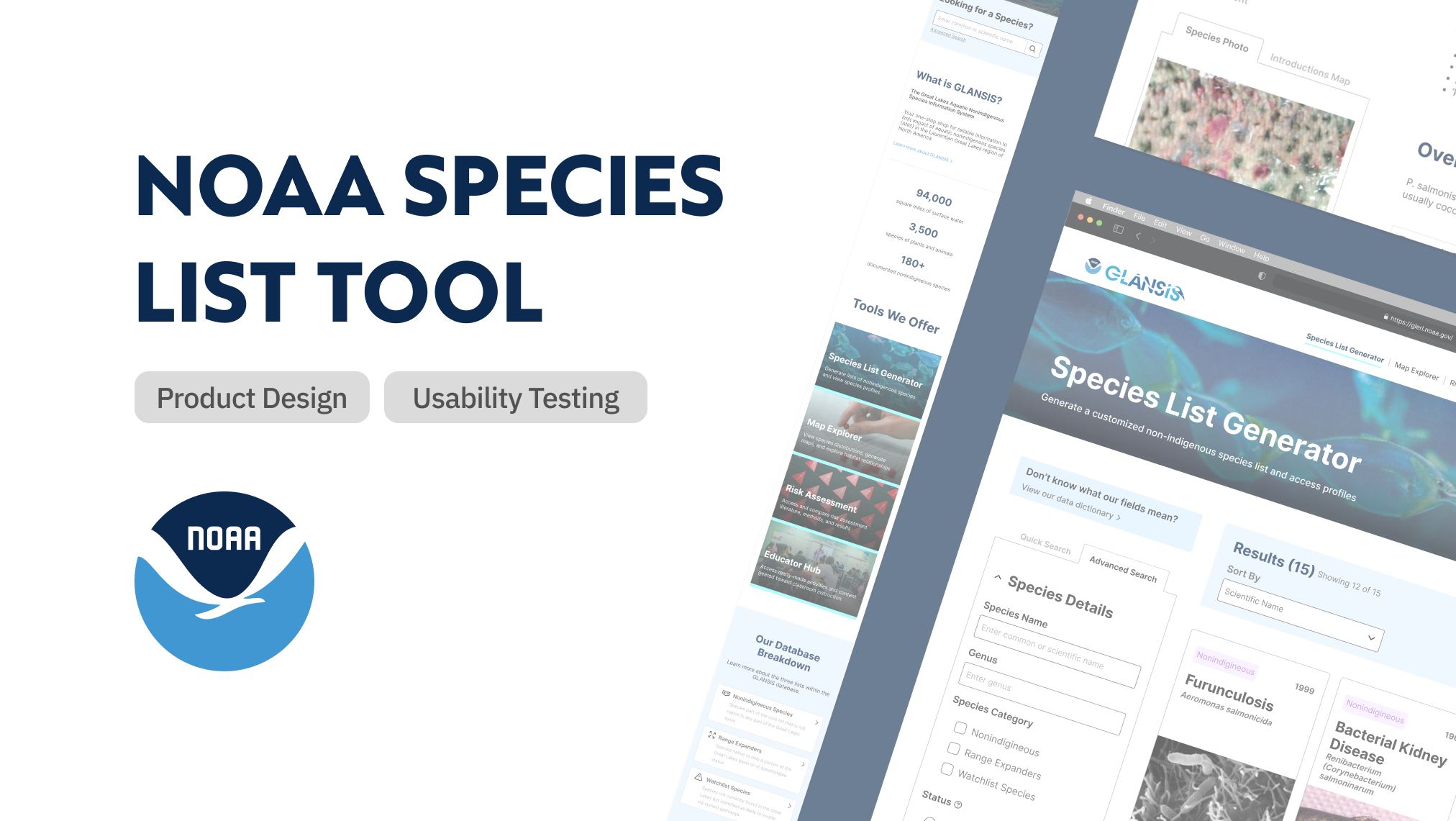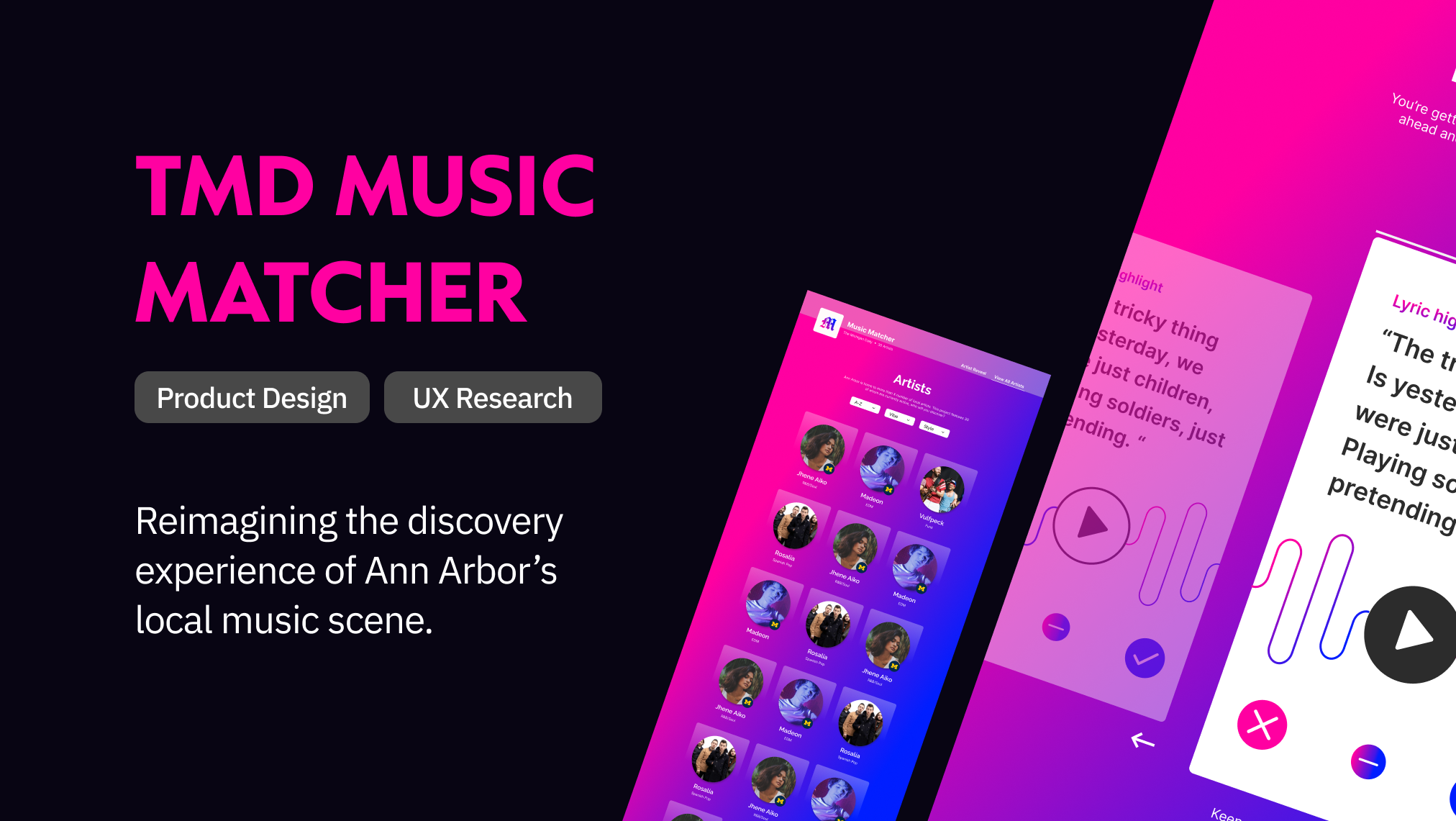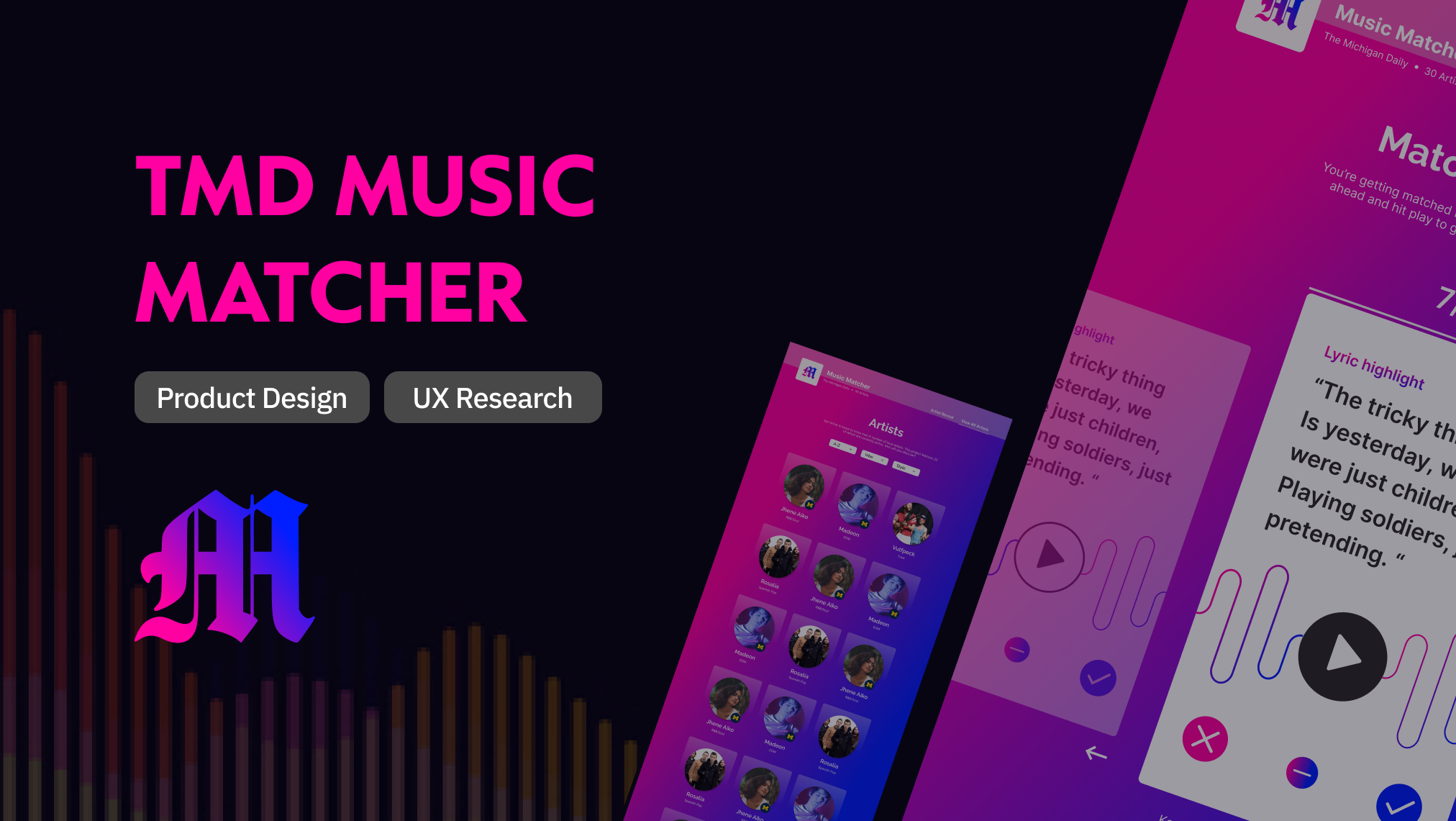Enhancing Civic Immersion
Recommending opportunities for city engagement through immersive technology.
What's the context?
The City of Ann Arbor harbored interest in exploring the immersive technology as an interactive medium to increase engagement with young residents and City Hall, provide better experiences with their services, and expand resident interactions. I was a student UX researcher in a team of 2 other students. Later on, our team collaborated with 2 other teams for data pooling purposes.
There is $24 million in funding for city engagement.
How should our recommendations inform these decisions?
With out client, the Ann Arbor City Hall Application leads,
we defined three main parts of our problem space in the stakeholder interview:
YOUNG ANN ARBOR RESIDENTS
"How do the future residents of AA want to experience these audience engagements?"
The Ann Arbor city government is integrated with the area that the University of Michigan occupies. The city itself has 110,00+ residents but out of these residents, 50,000+ are young adults (ages 18-34) who are primarily UM students hailing from outside the city, state, and country. These residents do not tend to engage with the city government despite being the dominant demographic of current and future residents of Ann Arbor.
civic engagement channels now
"Engagement is currently not overwhelming."
City interactions can encompass transactional services including taxes, utilities transactions, parking permits and fines in which the primary modes of interaction are in-person at the city hall counter, calling, and emailing. Further community engagement can be in the form of keeping up with email newsletters, social media, the city YouTube channel, comment sections, the citizens academy, and attending city council meetings. The greatest disadvantage these current means the the lack of emphasis on two-way interactions and low turn out.
interest in immersive technology
"How can I sign up for things that catch my attention?"
This was the first question posed by our stakeholders during the initial client interview– the appeal of immersive tech lies in the potential to stir interest in the Ann Arbor community, to emphasize two way interactions, as well as to make city engagement more accessible.
The stakeholder interviews gave us a lot to consider. Where do we even begin?
We needed to gain some background knowledge and to define our research direction.
background research:
What does immersive tech look like in cities?
Encouraging involvement & exploration. Existing immersive tech adopted by other cities was most commonly in the form of digital twins (VR copy of cityscape/city hall) and the XR gamification of city learning, exploration, and engagement. The intent was to increase citizen and tourist involvement in land use decisions and to increase exploration of the city and its commercial districts.
Due to the how recent these developments are, there is yet to be more documentation of the learnings of these adoptions. This does gives us some cases in which, in addition to our eventual research, can guide our recommendations.
Defining our Objectives:
We now attempt to answer a 24 million dollar question.
With 4 weeks. And the passion of young researchers.
The Process.
As we enter the research stages, our main guiding research question was:
How can immersive technology boost young residents' city engagement and perception of connectedness?
Week 1:
Pilot interviews
We conducted 11 rapid informal street interviews at the center of the UM campus with individuals who fit our inclusion criteria (ages 18-34).
Why? This stage will guide questions for subsequent surveying and interviews, allow us to get acquainted to our target group, and rapidly explore which of our initial questions tend to best retrieve anecdotes and elaborative statements.
How? We used two sets of questions, each given to half of participants to be mindful of their time as much as possible. We also tested our own impromptu questions.
Unfamiliarity with city government
Defaulting to negative transactions
Conflicting positive sounding comments and disinterested tone
Perceived insignificance as residents
Passive reception to city communications
Conflicting enthusiasm and skepticism toward AR/VR
Week 2:
surveying
We distributed a Qualtrics 9 question survey, with an estimated completion time of 5-7 minutes. There were 134 total respondents over a 5 day period.
Why? This stage will give us bigger scale quantitative breakdown of mixed sentiments, allow us to take a larger qualitative overview on resident interests and observations, and to later visualize trends and discrepancies.
And so we set out to collect data that will answer the following:
Data Processing: The Qualtrics raw data was then exported into Google Sheets for clean up.
Week 3:
Data Visualization
We created data visualizations to quantify observed trends and conflicting sentiments, evaluate our research direction, and to determine how qualitative data in the next phase can paint a bigger picture.
The greatest portion of respondents are ages 18-34.
This was our target demographic of young residents, which made up the greatest number of respondents out of all age groupings but make up less than half of total respondents.
We confirmed that 18-34 feels the least connected out of all age groups.
Despite having the highest number of respondents, this age group has the lowest average self-reported connectedness score at 2 out of a 1-5 Likert scale.
Overall, there is more interest in engaging despite a reported lower connection score.
In every age category, there is a gap in which average perception of connectedness is less than the average of their self-reported interest in engaging with the city. Interest in engaging seems to rise with age.
City culture has the most opportunity for engagement.
There is overall highest resident interest, notably in young residents, in engaging through Ann Arbor's diversity, sense of community, and local partnerships and events.
The term AR/VR can be seen as foreign to residents.
Immersion defined as AR/VR seems to garner mixed feelings or outright confusion similar to the pilot interviews– the highest number of respondents chose N/A.
And thus, our guiding question came to encompass all residents as well as further emphasize their experience:
How can residents' expectations for the city be better met to deepen their connection?
Week 3:
user interviews & Initial Analysis
We conducted 10 interviews with various Ann Arbor residents, each lasting 30 minutes.
Interview Flow
We had low response rate for interview recruitment so our inclusion criteria expanded to residents of all ages. This lead to the participant pool being concentrated toward two extremes – students who are young and new residents or working professionals who were middle-aged and have spent almost if not all their lives in Ann Arbor.
Interviewee Spectrum
Empathy Mapping
To identify behavioral and attitudinal patterns specific to the two distinct participants types we observed, we analyzed the raw interview data through two separate maps.
Young residents who are students
These residents don't see personal relevance nor value in seeking resources in which to engage with the city.
Effective points of contact from the city should be:
Older residents who are working professionals
These residents are comfortable in engaging through current means and are passionate about impact.
Current city engagement can be enriched by:
Personas
To allow us to acknowledge our limited participant make up and compare side by side the needs and habits of the observed two distinct audiences, we summarized the extremes of our interview spectrums through Kimi and Scott.
Week 4:
affinity mapping
To identify themes from our participant pool as a whole, we created an affinity maps to identify overarching themes and overlapping sentiments.
From the emerging themes, we found that residents in our participant pool...
Insights & Recommendations
Addressing existing experiences can reduce dissatisfaction from residents who aren't actively engaging.
• Participants, mainly the younger subset, find no interest and necessity to communicate with City Hall, are unfamiliar with its functions, and are unsatisfied with the encounters they did have
Recommendation: Clearly communicating benefits of engaging with the city government, streamlining current points of access with the City Hall building and experiences on existing mandatory processes can make city efforts more visible to unengaged residents.
Introduced technologies can be geared toward helping residents who prefer to selectively engage find topics of interest.
• Participants who feel low connectedness and desire to engage also indicate a desire to engage with selected topics they deem relevant. However they have difficulties connecting their interests to City Hall's role and offerings.
Recommendation: Directing new and existing technology toward guiding residents through the exploration of city topics can help acquaint residents who view city engagement to be overwhelming.
Connected city events can be leveraged for introducing new technologies.
• Participants' perception of the city and openness to new experiences are positively influenced by and during events that make them feel connected, which tend to be community events
Recommendation: Presenting residents with the opportunity to engage with emerging technology from the city during a positive event, such as the Farmer's Market, can help residents grow comfortable with new offerings from the city.
Immersive experiences are not limited to a particular technology but involve an element of familiarity.
• Participants are largely unfamiliar and are intimidated by immersive technology defined as AR/VR but are comfortable describing immersion as being social media, smartphones, and community events
Recommendation: Immersion can be enhanced by building presence in spaces and technologies already integrated into residents' lives. New technologies can be tested and demoed in a way that is integrated into familiar events and spaces for visibility.
Reflection & Takeaways
Framing is especially important when delivering research outcomes that clash with client expectations.
There were existing assumptions on what city residents would like to see being built that the client had wanted us to confirm through our research efforts. Because we were presenting findings that did not align with the client's vision, it became a challenge in how to deliver the findings in a way that would be relevant to the client. We took care to frame our recommendations to be broad, actionable, and with an emphasis on user impact.
Feedback from an interview protocol or survey pilot can save time.
UX research protocols should also be iterated upon much like designs. Planning in a piloting period was something I didn't realize was good practice until his project, in which we were able to adapt our interview questions earlier on to be more approachable on a topic that may seem formal to participants.
Many things may not go as planned so be ready to adapt research direction.
Due to the limited time we had to interview and gather survey responses, which simultaneously was roughly a week and a half, we realized that gathering data from a different angle than anticipated was still better than little to no data with the initial plan. We had to adapt by expanding our inclusion criteria, pooling our data with others, and being transparent about any bias from the resulting data that may have been influenced by factors such as participant makeup or response numbers.




